|
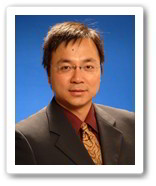
|
Prof. DING, Lei
Computational Challenges in Adaptive NeuroTechnologies for Discoveries and Findings Neuroimaging technologies are rapidly entering clinical practice and have dramatically advanced our capability in medical diagnosis of neuropsychiatric disorder and presurgical planning of neurological diseases. What are the clinical needs that will drive the further advancement of neuroimaging technologies in the next decade? What type of neuroimaging technologies can fulfill such clinical needs? My presentation will talk about the need of new concepts and innovations in advancing neuroimaging technologies to be more adaptive and demonstrate the need for wearable neuroimaging devices. With the availability of new wearable devices, our challenge in adaptive neuroimaging is on how to analyze data that are huge in terms of size, lack of behavioral references, and noisy since they will be collected in natural environments. Beyond diagnosis, I will also talk about new frontiers in developing adaptive neuromodulation, which can potentially deliver bioelectric medicine to patients with brain disorders to provide management and treatment of the disease. In particular, the integration of adaptive neuroimaging and neuromodulation technologies with the support from the big data exploration can potentially lead to closed-loop home-based treatments. Our goal in the long term is to transform the healthcare for people with neuropsychiatric disorders with early detection and from expensive hospital centered diagnosis to home-based diagnosis via addressing computational challenges.
Biography Dr. Lei Ding is a Presidential Professor of Biomedical Engineering, Electrical and Computer Engineering, and Neuroscience, and Director of Institute for Biomedical Engineering, Science, and Technology (IBEST) at the University of Oklahoma. He is also an Affiliated Associate Professor at the Laureate Institute for Brain Research, Tulsa, Oklahoma. He has made significant original contributions to research in functional neuroimaging, noninvasive neuromodulation, brain-computer interface, and imaging biomarkers for neurological and psychiatric disorders. He received B.E. degree (Highest Honors) from Zhejiang University, China (2000), and Ph.D. degree (Dissertation Fellow) from the University of Minnesota (2007), both in biomedical Engineering.
Dr. Ding is the recipient of the National Science Foundation CAREER Award and the only recipient of the New Scientist Award from the State of Oklahoma in 2009. He is the recipient of Early Career Achievement Award of 2016 from IEEE Engineering in Medicine and Biology Society, the world largest biomedical engineering society. He has published over 80 peer-reviewed papers in areas of medical imaging and neural engineering. Dr. Ding is a member of the Institute of Electrical and Electronics Engineers (IEEE), IEEE Engineering in Medicine and Biology Society (EMBS), International Society for Bioelectromagnetism (ISBEM), Organization of Human Brain Mapping (OHBM), and Society for Neuroscience (SfN).
Dr. Ding serves as an elected Administrative Committee (AdCom) member at IEEE EMBS between 2015 and 2018. He also serves as an Associate Editor for IEEE Transactions on Biomedical Engineering and IEEE Access, on editorial boards for several other biomedical journals, and as a reviewer for over 30 prestigious journals in the area of biomedical engineering. He has been a member of IEEE EMBS Technical Committees on Biomedical Signal Processing and Biomedical Imaging/Image Processing and Associate Editor at EMBS Conference Editorial Board since 2008. He has served as Conference Program Chair/Co-Chair, Theme Chair/Co-Chair, Track Chair/Co-Chair or Session Chair/Co-Chair on EMBS Annual flagship conference and/or other special topic conferences at EMBS since 2007, and chaired the EMBS chapter at IEEE OKC section in 2010-2011.
|
|

|
Prof. FOTIADIS, Dimitrios I.
Multilevel Modelling Approaches of the Atherosclerotic Plaque Growth in Coronary Arteries and Carotids The mechanisms of atherosclerosis remain unclear and computational modeling can used to provide insights for the understanding of the processes which lead to the initiation of atherosclerotic plaque and its progress. The available methodologies for vascular image processing and cardiovascular mechanics are investigated. A multi-level modeling approach which can be used: i) for the prediction of regions which are prone to plaque formation, ii) for the medical decision support providing estimation of the fractional flow reserve (FFR), and iii) for simulating the deformation of stent in coronary arteries is presented. More specifically, 3-dimensional (3D) arterial reconstruction is performed. The 3D arteries are used for modeling of blood flow and computation of endothelial shear stress (ESS) through the implementation of Fluid Structure Interaction (FSI) models. The accumulation of lipoproteins and monocytes into the arterial wall is simulated, and the plaque growth is modeled considering the lipoprotein oxidation, the macrophages differentiation and the foam cells formation. FFR is also calculated implementing a novel methodology, while the stent deformation in stenosed and bifurcated arteries is modeled. Each modeling approach is validated using human data and the results show that computational modeling might assist in understanding the pathophysiology of atherosclerosis.
Biography Dr. Fotiadis is Prof. of Biomedical Engineering and Director of the Unit of Medical Technology and Intelligent Information Systems (MEDLAB), University of Ioannina, Ioannina, Greece. Dr Fotiadis is the founder of MEDLAB, which now is one of the leading centers in Europe in Biomedical Engineering with activities ranging from the development of health monitoring systems to big data management and multiscale modelling. The Unit is an active center for many R&D projects and is considered as a center of excellence for human tissues modelling activities with international collaborations with the research community, industry and public organizations. Dr Fotiadis is affiliated researcher of the Biomedical Research Dept. of the Institute of Molecular Biology and Biotechnology, FORTH, and member of the board of Michailideion Cardiac Center. Dr. Fotiadis’ main research interests include wearable systems, multiscale modelling and intelligent processing of medical and related data. He developed wearable systems for the monitoring, treatment, motivation and coaching for patients with neurodegenerative diseases and other chronic conditions. Those systems combine a set of sensors and biosensors with decision making tools and patient/ecosystem feedback, as well as behavioral models and patient adherence mechanisms. In modelling, he developed multiscale models for the prediction of atheromatic plaque growth, based on realistic reconstruction of arteries from various imaging modalities. He pioneered the modelling of complex human structures, such as bones, to perform in silico clinical trials of various biomedical systems. He employed machine learning techniques to develop predictive models for chronic diseases, exploiting medical, lifestyle, environmental, and genetic data which are integrated with existing knowledge and models to improve diagnostic and predictive accuracy. He works in the harmonization and integration of data from longitudinal cohorts. Dr. Fotiadis is the recipient of many awards, including the Academy of Athens Award and active member of the IEEE Engineering in Medicine and Biology Society, being a member of the Technical Committee of Biomedical and Health Informatics and the Chairman of the IEEE EMBS Greek Chapter. Dr. Fotiadis coordinated the organization of many EMBS conferences and other events. He is the Editor in Chief of the IEEE Journal of Biomedical and Health Informatics.
|
|

|
Prof. LIANG, Zhipei
Ultrafast MR Spectroscopic Imaging: A Path to High Spatiotemporal Resolution through Subspaces Molecular imaging has been a dream of biomedical imaging scientists for decades, and governments and industries around the world have invested billions into this area. However, most existing molecular imaging techniques (e.g., PET and SPECT) require exogenous molecular probes or reporters to be introduced into a subject in order to obtain molecule-specific information, thereby limiting their practical utility. Magnetic resonance spectroscopic imaging (MRSI) has long been recognized as a powerful tool for non-invasive, label-free molecular imaging and a lot of outstanding work has been done over the past three decades, resulting in significant advances in MRSI data acquisition, pulse sequences, data processing, and image reconstruction. However, in spite of these enormous progresses, current MRSI technology still falls short of providing adequate spatial resolution, speed, and signal-to-noise ratio (SNR) for routine clinical and research applications.
The talk will discuss our recent advances in overcoming the long-standing technical barriers for label-free molecular imaging using intrinsic MR signals. This ultrafast MRSI technology, resulting from many years of research efforts, is based on a new approach to spatiospectral imaging, which includes rapid data acquisition, sparse sampling of (k, t)-space, constrained image reconstruction, and learning-based spectral quantification using spectral basis from quantum simulation. This technology has demonstrated an unprecedented combination of resolution, speed and SNR for MRSI. In this talk, I will discuss this new ultrafast MRSI technology and show some exciting experimental results we have obtained.
Biography Zhi-Pei Liang received his Ph.D. degree in Biomedical Engineering from Case Western Reserve University in 1989. He subsequently joined the University of Illinois at UrbanaChampaign (UIUC) first as a postdoctoral fellow and then as a faculty member in the Department of Electrical and Computer Engineering. Dr. Liang is currently the Franklin W. Woeltge Professor of Electrical and Computer Engineering; he also co-chairs the Integrative Imaging Theme in the Beckman Institute for Advanced Science and Technology. Dr. Liang’s research is in the general area of magnetic resonance imaging and spectroscopy, ranging from spin physics, signal processing, machine learning, to biomedical applications. Research from his group has received a number of recognitions, including the Sylvia Sorkin Greenfield Award (Medical Physics, 1990), Whitaker Biomedical Engineering Research Award (1991), NSF CAREER Award (1995), Henry Magnuski Scholar Award (UIUC, 1999), University Scholar Award (UIUC, 2001), Isidor I. Rabi Award (International Society of Magnetic Resonance in Medicine, 2009), IEEE-EMBC Best Paper Awards (2010, 2011), IEEE-ISBI Best Paper Award (2010, 2015), Otto Schmitt Award (International Federation for Medical and Biological Engineering, 2012), and Technical Achievement Award (IEEE Engineering in Medicine and Biology Society, 2014). Dr. Liang is a Fellow of the IEEE, the International Society for Magnetic Resonance in Medicine, and the American Institute for Medical and Biological Engineering. He was elected to the International Academy of Medical and Biological Engineering in 2012 and named the Lauterbur Lecturer of the 2016 ISMRM Annual Meeting. Dr. Liang served as President of the IEEE Engineering in Medicine and Biology Society from 2011-2012 and received its Distinguished Service Award in 2015.
|
|
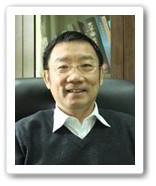
|
Prof. MA, Hui
Polarization Microscopy for Quantitative Assessment of Micro- and Macro-structure of Biological Specimen Polarization imaging is potentially a powerful technique for quantitatively characterizing the microstructural features of complex biological specimens. We have developed recently a Mueller matrix microscope by adding a polarization state generator (PSG) and a polarization state analyzer (PSA) to a commercial transmitted-light microscope, and applied it to differentiate human liver and cervical cancerous tissues with fibrosis. In this paper, we apply the Mueller matrix microscope to facilitate the quantitative detections of human breast carcinoma tissues in different stages from the normal ductal samples to the invasive ductal carcinoma samples. Also, the Mueller matrix polar decomposition and transformation parameters of the breast ductal tissues in different regions at different stages are calculated and analyzed. For a deeper insight on the contrast mechanisms, Monte Carlo (MC) simulations based on the sphere birefringence model are carried out to examine in detail the relationship between the transformed polarization parameters and the distinctive pathological characteristics of fibrosis. Both the experimental and simulated results prove the feasibility to use the Mueller matrix microscope and the feature specific polarization parameters for quantitative detection of breast ductal carcinoma tissues in different stages.
Biography MA Hui is a professor of the Division of Life Science and Health, Graduate School at Shenzhen, and Department of Physics, Tsinghua University. He obtained his PhD degree in atomic physics and laser spectroscopy from Imperial College London in 1988, then worked as post-doctor in Imperial College and Dalian Institute of Chemical Physics on highly excited states of atoms and molecules. He joined Department of Physics, Tsinghua University in 1991 working on laser spectroscopy techniques before 1999, then on biophotonics techniques and applications. In 2003, he joined the newly established Graduate School at Shenzhen and set up the Laboratory of Optical Imaging and Sensing which is now part of the Shenzhen Key Laboratory of Minimally Invasive Medical Technologies.
His current research field is polarized photon scattering and its applications, which include new techniques for accurate and robust measurements of polarization states of the photons and polarization properties of the complex biological samples, new ways to extract quantitatively the information on the microstructure and optical properties of the complex biological samples which are encoded in the large number of polarization parameters, and new applications of these findings to real problems ranging from diagnosis and staging of carcinoma tissues, classification of marine organisms such as harmful marine algae, monitoring and tracing of micron-scale pollutant particles in air.
|
|

|
Prof. MENG, Max Qinghu
Micro Medical Robotics: Painless and Scarless Research on micro medical robotics is attracting more and more public attention and research efforts lately. Recent revolutionary development and drastic progress in robotic technology in terms of both hardware capability and software power have made it possible for researchers to redefine what micro medical robotics can achieve to facilitate complicated medical procedures with much less pain and surgical procedures without even external scars. In this talk, we will start with an introduction to how research on micro medical robotics started and what the milestone achievements are, and then move onto our own research efforts on micro medical robotics with several case study examples. Personal thoughts and outlook on future research efforts and potentials in micro medical robotics will be outlined to conclude the talk.
Biography Max Q.-H. Meng received his Ph.D. degree in Electrical and Computer Engineering from the University of Victoria, Canada, in 1992 and his Master's degree from Beijing Institute of Technology in 1988. He joined the Chinese University of Hong Kong in 2001 and is currently serving as Professor and Chairman of Department of Electronic Engineering at CUHK. He was a professor in the Department of Electrical and Computer Engineering at the University of Alberta in Canada, serving as the Director of the ART (Advanced Robotics and Teleoperation) Lab and holding the positions of Assistant Professor (1994), Associate Professor (1998), and Professor (2000), respectively. He is affiliated with the State Key Lab on Robotics and System at Harbin Institute of Technology and the Honorary Dean of the School of Control Science and Engineering at Shandong University, in China. His research interests include robotics, perception and sensing, human-robot interaction, active medical devices, bio-sensors and sensor networks, and adaptive and intelligent systems. He has published more than 500 journal and conference papers and book chapters and led more than 40 funded research projects to completion as Principal Investigator. He has served as an editor of the IEEE/ASME Transactions on Mechatronics and an associate editor of the IEEE Transactions on Fuzzy Systems, and is currently a technical editor of a number of journals in robotics. He has served as the General Chair of several conferences, including IROS 2005, AIM 2008, WCICA 2010, and Robio 2013 conferences. He is the General Chair of IEEE ICRA 2021 to be held in Xi’an, China. He is the founder of the IEEE ICIA conference series and co-founder of the IEEE Robio conference series. He served as an Associate VP for Conferences of the IEEE Robotics and Automation Society (2004-2007), an AdCom member of the IEEE Neural Network Council/Society (2003-2006), the Co-Chair of the Fellow Evaluation Committee of the IEEE Robotics and Automation Society. He is currently serving as an elected member of the Administrative Committee (AdCom) of the IEEE Robotics and Automation Society. He is a recipient of the IEEE Third Millennium Medal award and he is a Fellow of IEEE, Fellow of the Canadian Academy of Engineering, and Fellow of HKIE.
|
|
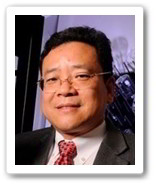
|
Prof. NIE, Shuming
Nanotechnology, Biomarkers, and Artificial Intelligence for Digital Health Materials on the nanometer scale such as quantum dots, plasmonic nanostructures, and polymeric nanomicelles have electronic, optical, magnetic, and structural properties that are not available from either discrete molecules or bulk materials. When conjugated with targeting ligands such as monoclonal antibodies, peptides or small molecules, these nanoparticles can be used to target malignant tumor cells and the immune microenvironments with high specificity and affinity. In the “mesoscopic” size range of 1 to 100 nm, nanoparticles also have large surface areas for conjugating to multiple diagnostic and therapeutic agents, opening new possibilities in chemical sensing, molecular imaging, and biomarker detection. In particular, we have developed spectrally encoded and biocompatible nanoparticles based on surface-enhanced Raman scattering (SERS) for ultrasensitive measurement of diagnostic and prognostic protein biomarkers. Here I will discuss new opportunities and challenges in combining nanotechnology, blood biomarkers, and artificial intelligence (AI) for prediction and intervention of clinical cardiac events, especially myocardial infarction and sudden death. (Supported by NIH grants U54CA119338, RC2CA148265, R01CA108468, and R01CA163256).
Biography Dr. Nie is the Wallace H. Coulter Distinguished Chair Professor of Biomedical Engineering at Emory University and the Georgia Institute of Technology, Director of the Emory-Georgia Tech Cancer Nanotechnology Program, and Founding Dean of the College of Engineering and Applied Sciences of Nanjing University (China). His academic work is primarily in the areas of nanomedicine, biomolecular engineering, stimuli-responsive materials, molecular and cellular imaging, and image-guided surgery. Professor Nie has published over 300 papers, patents, and book chapters, have delivered more than 450 invited lectures around the world, and have trained over 30 doctoral students and postdoctoral fellows who are now making an impact at top academic institutions and biotech companies. His scholarly work has been cited 55,000 times with an h-index of 86 (Google Scholar). Professor Nie received his BS degree from Nankai University (China) in 1983, earned his MS and PhD degrees from Northwestern University (Evanston, Illinois, 1984-1990), and did postdoctoral research at the Georgia Institute of Technology and Stanford University (1990-1994).
|
|
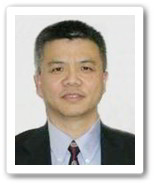
|
Prof. PAN, Xiaochuan
From Technology-Driven to Application-Driven: Evolution and Innovation of Advanced X-ray Tomographic Imaging X-ray tomographic imaging such as computed tomography plays an increasingly dominant role in modern medicine and many other disciplines such as security scans and material sciences. In the past 20 years, X-ray tomographic imaging has been enjoying a significant period of renaissance, as a result of the rapid advances in research and engineering not only enabled by technological development of hardware and algorithms, but also, more importantly, driven by application needs. This trend is likely to remain at least in the foreseeable future. The advances have opened up ample opportunities for developing innovative tomographic imaging systems and imaging protocols tailored to specific applications in medicine, biology, and material sciences. In the presentation, using some examples, I will highlight the past, and speculate the future, evolution and innovation in X-ray tomographic imaging driven by practical applications.
Biography Xiaochuan Pan is a Professor in the Department of Radiology, Department of Radiation & Cellular Oncology, the Committee on Medical Physics, the Comprehensive Cancer Center, and the College at The University of Chicago. His research interest centers on physics, algorithms, and applications of tomographic imaging, and has published more than 450 papers on his research. He is the recipient of numerous awards, including IEEE NPSS Early Achievement Award, IEEE EMBS Technical Award, and Distinguished Investigator Award of ARR, and is a Fellow of AAPM, AIMBE, IAMBE, IEEE, OSA, and SPIE. Dr. Pan has served as a chair and/or a reviewer of study sections/review panels for funding agencies, including NIH, NSF, DOE, AIBS, NSERC, ASF, NSFC, FNRA, SRNSF, IMSTS, and RGCHK, as a board member and associate editor for journals in the field such as IEEE Trans. Med. Imaging, IEEE Trans. Biomed Eng., IEEE J. Transl. Eng. Health and Med., Phys. Biol. Med., Med. Phys., and J. Med. Imaging, as a chair/member of technical committees of professional organizations such as IEEE, RSNA, and AAPM, and as a general chair, chair/member of programs, themes, and technical/scientific committees for conferences such as IEEE EMBC, IEEE MIC, RSNA, AAPM, and MICCIA.
|
|
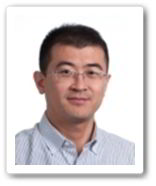
|
Prof. PANG, Zhibo
Convergence of Automation, Biomedical Engineering, and Heath Informatics for Aging Society As a traditional research topic of biomedical engineering and health informatics, the aging of population has been globally recognized as one of the top grand challenges. Pulled by this grand social challenge, automation technologies are dramatically “spilling out” from the traditional scenarios such as factories and workshops to biomedicine and healthcare. Especially in the context of the fourth revolution of industry (Industry4.0), cross disciplinary synergy of expertise and deep convergence of the automation technologies, biomedical engineering, and health informatics, the research landscape is being reshaped both in academia and industry towards the rapid development of Health Engineering, an emerging interdisciplinary field for the predictive, preventive, precise and personalized medicine. This has offered an unpresented opportunity for solving the challenges caused by the aging of population. For example, the know-how from industrial robotics e.g. for automotive manufacturing can largely accelerate the development of medical robots, caring robots, and assistive equipment for elderlies. The ultra-reliable and hard real-time communication technologies from industrial control systems can help to bring the remote medicine (e.g. monitoring, diagnosis, surgery, emergency, and caring) into reality because the communication reliability and latency has been recognized as one of the bottlenecks. The advanced Distributed Control Systems (DCS) from factories can elevate the methods for modelling, simulating and optimizing healthcare processes to a higher level. Imagine if a hospital can be operated as precisely and efficiently as an airplanes!
In this presentation, I will briefly introduce the background of Industry 4.0 and Made in China 2025, and the Healthy China 2030. In this context, some emerging research topics and market trends will be exampled by some ongoing projects at ABB such as the smart, healthy, robotized and productive homes, collaborative robots, and hospital automation. Cross-domain and cross-disciplinary research and collaborations involving the automation communities and biomedicine communities are urgently demanded.
Biography Dr. Zhibo Pang (Senior Member IEEE) received B.Eng. in Electronic Engineering from Zhejiang University, Hangzhou, China in 2002, MBA in Innovation and Growth from University of Turku, Turku, Finland in 2012, and PhD in Electronic and Computer Systems from the Royal Institute of Technology (KTH), Stockholm, Sweden in 2013. He is currently a Principal Scientist and Project Manager on Industrial IoT at ABB Corporate Research, Västerås, Sweden, leading research projects on digitalization solutions for smart buildings and homes, factory and manufacturing, and power systems. He is also serving as Adjunct Professor or similar roles at universities such as Royal Institute of Technology (KTH), Sweden, Tsinghua University, China, and Beijing University of Posts and Telecommunications (BUPT), China.
He is a Senior Member of IEEE and serves as Vice Chair of the Technical Committee on Cloud and Wireless Systems for Industrial Applications, and Chair of Sub TC in the Technical Committee on Industrial Informatics, Industrial Electronics Society of IEEE. He is Associate Editor of IEEE Transactions on Industrial Informatics, IEEE Journal of Biomedical and Health Informatics, and IEEE Reviews in Biomedical Engineering, Guest Editor of IEEE Access, Editorial Board of Journal of Management Analytics (Taylor & Francis), Journal of Industrial Information Integration (Elsevier), and International Journal of Modeling, Simulation, and Scientific Computing (WorldScientific).
He has 44 patents and 21 refereed journal papers and 40+ conference papers. He won the National Great Invention Award of China in 2005, the First Place Prize of the RFID Nordic EXPO in 2008, and the Outstanding Paper Awards in ICACT2013. He was awarded the “2016 Inventor of the Year Award” by ABB Corporate Research Sweden. This is the only award for individuals and only 1 winner per year out of 300+ researchers.
|
|

|
Prof. PATTICHIS, Constantinos S.
Cardiovascular Health Informatics: Predicting the Risk of Stroke Based on Ultrasound Image Analysis of the Atherosclerotic Carotid Plaque Cardiovascular (CV) disease is one of the most common causes of death worldwide and represents a major financial burden for national economies. Effective prediction and prevention of CV disease, particularly which resulted from high-risk asymptomatic atherosclerosis, has now become a top priority. The goal of this lecture will be to give a review of non-invasive ultrasound image processing methods that are used to facilitate the intelligent analysis of carotid plaque morphology for predicting stroke risk. The lecture will begin with a review of clinical methods for visual classification that have led to standardized methods for image acquisition. Methods for ultrasound imaging atherosclerotic plaque denoising, and image segmentation will then be described, followed by an overview of multi-scale texture-feature extraction algorithms and classification methods investigated. Risk modeling based on clinical and ultrasonic plaque texture features that enable the assessment of the risk of stroke will be described.
Biography He is currently Professor with the Department of Computer Science of the University of Cyprus. His research interests include ehealth and mhealth, medical imaging, biosignal analysis, life sciences informatics, and intelligent systems. He has published 100 refereed journal and 214 conference papers, and 27 chapters in books in these areas. He is Co-Editor of the books M-Health: Emerging Mobile Health Systems, and of the Ultrasound and Carotid Bifurcation Atherosclerosis, published by Springer in 2006, and 2012 respectively. He was Guest Co-Editor of 17 journal Special Issues including the more recent ones on Atherosclerotic Cardiovascular Health Informatics, and Citizen Centered e-Health Systems in a Global Health-care Environment, of the IEEE Trans. on Information Technology in Biomedicine. He was General Co-Chairman of the XIV Mediterranean Conference on Medical and Biological Engineering and Computing (Medicon2016), the IEEE 12th International Conference on BioInformatics and BioEngineering (BIBE2012), and the IEEE Information Technology in Biomedicine (ITAB09). Moreover, he served as Distinguished Lecturer of the IEEE EMBS, and serves as Associate Editor of the IEEE Journal of Biomedical and Health Informatics, and on the Editorial Board of the Journal of Biomedical Signal Processing and Control. He is a Fellow of IET, and Senior Member of IEEE.
|
|

|
Prof. TAMARA, Toshiyo
Current Development of Wearable and Invisible Blood Pressure Monitor and Approach to the ISO Standards Wearable cuff-based and cuffless blood pressure monitor are great interests to measure blood pressure continuously during daily activities. There are several devices in the market. In this presentation, the current wearable and invisible blood pressure monitories including our newly developed device are reviewed in terms of healthcare products. Then the possibility of the medical approval is discussed.
We have attempted an unobtrusive cuffless BP monitoring system based on pulse arrival time (PAT). The background of development, methodology and results of our study are presented. The developed system satisfied the requirement of IEEE standard 1708-2014. These results suggest that the proposed system has quite the potential for long-term home BP monitoring.
Together with industry our developed device will distribute in the market. For this aim, we need to solve several steps. Even though the device is screening purpose, the definition is used as blood pressure unit, mmHg. Thus, device must be clear the medical approval such as ISO and medical device regulation authorized by FDA (USA), PMDA (Japan), KFDA (Korea) and so on. Before propose the cuffless blood pressure monitor to ISO, the current movement of cuff-based blood pressure (ISOTC121-S3) is shown including the opinions of ISOTC121-S3 Members, current trend of Japanese industries, and possible solutions to obtain authorized approval.
Biography Dr. Toshiyo Tamura received his BS and MS degrees from Keio University, Japan, in 1971 and 73, respectively and Ph.D. from Tokyo Medical and Dental University in 1980. He is currently a visiting senior researcher, Future Robotics Organization, Waseda University, Japan. He also holds several adjunct positions in universities in Japan and Singapore.
His research interests include biomedical instrumentation, biosignal processing, telemedicine telecare, home care technology and rehabilitation engineering. His research has resulted in over 120 English reviewed articles. His and his colleagues book entitled “Biomedical sensors and instruments” is a popular textbook for bio-instrumentation and medical devices. He also wrote several chapters including sensors for telemedicine and application of wearable inertia sensors.
He is involved regional innovation strategy support program and creates innovations for achieving healthy and long life through the development of health care systems with smart bioinstrumentation and testing. He has developed unobtrusive monitoring systems and wearable devices for improving the quality of life.
He has served as a chair of IEEE/EMBS Tokyo Chapter in 1996-2000, and the Asian Pacific representative for the EMBS from 2000 to 2004. He was a -president of Japanese Society of Medical Electronics and Biological Engineering (JSMEBE) in 2010-2012 and a-president of Japanese Society of Life Support Technology in 2009-2011. He is an IAMBE fellow and honorary member of JSMEBE.
|
|

|
Prof. TAN, Lihai
Brain Plasticity and Language Processing Neuroplasticity refers to the brain's ability to reorganize itself by forming new neural pathways due to changes in behavior, cognition, and environment. Contrary to the conventional wisdom, recent neuroscience research indicates that experience can quickly change both the human adult brain's physical structure (anatomy) and functional organization (physiology). In this talk I will summarize structural and functional MRI evidence from the studies of language to show that how the anatomical and functional networks of the normal adult brains change in response to language learning. Evidence from the brain-damaged patients will also be reviewed, suggesting that cortical dynamics adjust their activities to compensate for injury and disease. The promises and challenges of translating basic neuroimaging research into clinical practice require us to carefully investigate individual- and culture-related neuroplasticity in order to preserve critical life skills such as language and motor for patients after the neurosurgery.
Biography Prof. Li-Hai Tan is Director of Shenzhen Institute of Neuroscience and Distinguished University Professor of Shenzhen University Health Science Center. He received his Ph.D. in psycholinguistics from the University of Hong Kong in 1995. Following post-doctoral research training in Learning Research and Development Center of the University of Pittsburgh, he worked in University of Hong Kong during 1999-2014, where he was tenured professor in 2007. Prof. Tan has performed research in the field of psycholinguistics and neuroscience at the University of Hong Kong, the Research Imaging Center of the University of Texas Health Science Center, University of Pittsburgh, Intramural Research Programs of the National Institute of Mental Health of NIH, and Chinese Academy of Sciences. He founded the State Key Laboratory of Brain and Cognitive Sciences at the University of Hong Kong in 2005 and served as its director until 2014. He has served as an associate editor of the journal Human Brain Mapping, and is now an editorial board member of the following journals: Human Brain Mapping, Neuroscience, Journal of Neurolinguistics, Culture and Brain, and Contemporary Linguistics. His research interests include the neuroimaging study of language and translating the basic research findings into clinical practice.
|
|
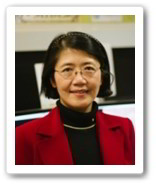
|
Prof. WANG, May Dongmei
Biomedical and Health Informatics for Outcome-Driven Personalized Health Care Rapid advancements in biotechnologies such as –omic (genomics, proteomics, metabolomics, lipidomics etc.), next generation sequencing, bio-nanotechnologies, molecular imaging, and mobile sensors etc. accelerate the data explosion in biomedicine and health wellness. Multiple nations have been seeking novel effective ways to make sense of “big data” for evidence-based, outcome-driven, and affordable 5P (Patient-centric, Predictive, Preventive, Personalized, and Precise) healthcare. My team has been conducting multi-modal and multi-scale (i.e. molecular, cellular, whole body, individual, and population) biomedical data analytics research for discovery, development, and delivery.
First, I will highlight major challenges in biomedical health informatics pipeline consisting of data quality control, information feature extraction, advanced knowledge modeling, decision making, and proper action taking through feedback. Second, I will present how to deal with missing data for medical data, which is proven to be a top cause of death in US. Third, I will share how deep learning with integrated Biomedical Big Data can improve care outcome. Last, there is big shortage of data scientists and engineers in using Biomedical Big Data to fulfill societal need for patients, physicians, payers, and hospitals. I will discuss efforts such as patient-centric educational intervention, community-based crowd sourcing, and Biomedical Data Analytics MOOC development.
Biography Dr. May Dongmei Wang is a full professor in the Joint Biomedical Engineering Department of Georgia Tech and Emory University, a Kavli Fellow, a Georgia Cancer Coalition Scholar, Georgia Tech Petit Institute Faculty Fellow, and a Fellow of the American Institute for Biological and Medical Engineering (AIMBE). She received BEng from Tsinghua University in China, MS and PhD from Georgia Institute of Technology in USA. Her research is in Biomedical Big Data Analytics with a focus on Biomedical and Health Informatics (BHI) for predictive, personalized, and precision health (pHealth). In FDA-organized MAQC international consortium, she led the comprehensive RNA-Seq data analysis pipeline study. Dr. Wang has published over 200 papers in peer-reviewed journals (e.g. Briefings in Bioinformatics, BMC Bioinformatics, IEEE/ACM Transactions on Computational Biology and Bioinformatics, Journal of American Medical Informatics Association, Journal of Biomedical and Health Informatics, Journal of Pathology Informatics, PNAS, Annual Review of Medicine, Nature Protocols, Circulation Genetics, IEEE Trans. on Biomedical Engineering etc.) and conference proceedings and delivered more than 200 invited and keynote lectures. She received Outstanding Faculty Mentor Award for Undergraduate Research at Georgia Tech, and a MilliPub Award (for a high-impact paper that has been cited over 1,000 times) from Emory University.
Dr. Wang has served as an Emerging Area Editor for Proceedings of the National Academy of Sciences, Senior Editor for Journal of Biomedical and Health Informatics, an Associate Editor for IEEE Transactions on Biomedical Engineering, and a panelist in various grant review panels in NIH, NSF, Canada, and Europe. She has been serving in IEEE Big Data Initiative (BDI) Steering Committee, and has helped organize IEEE International Conference on Biomedical and Health Informatics and 2016 EMBS annual conference. She has also helped organize ACM Bioinformatics, Computational Biology and Health Informatics Conference, and is elected as Vice Chair for 2018 Gordon Research Conference (GRC) on Advanced Health Informatics. Currently, Dr. Wang is Georgia Tech Biomedical Informatics Program Co-Director in Atlanta Clinical and Translational Science Institute (ACTSI), and Co-Director of Georgia-Tech Center of Bio-Imaging Mass Spectrometry. Her research has been supported by NIH, NSF, CDC, Georgia Research Alliance, Georgia Cancer Coalition, Emory-Georgia Tech Cancer Nanotechnology Center, Children’s Health Care of Atlanta, Atlanta Clinical and Translational Science Institute (ACTSI), and industrial partners such as Microsoft Research and HP.
|